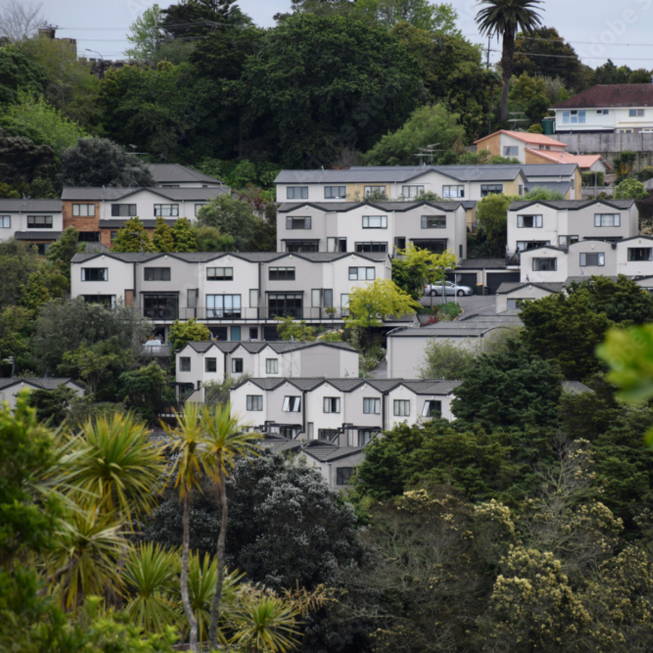Throughout New Zealand, those in tier 1 cities (Auckland, Hamilton, Tauranga, Wellington, Christchurch and now Rotorua) took notice late August as the deadline hit for councils to notify their plan changes incorporating the Government’s Medium Density Housing Standards (MDHS).
Part of the Resource Management (Enabling Housing Supply and Other Matters) Amendment Act 2021, in short the MDHS allow people to build up to three dwellings of up to three storeys on most sections in residential zones without needing to obtain a resource consent or approval from their neighbours. Effectively, it makes housing expansion easier.
All tier 1 councils were required to notify their proposed plan changes by 20 August, after which the MDHS have immediate effect. Plan changes from each council have just closed for public submission.
Councils will need to assess future consent applications against both the current and proposed plan rules, until the plan changes have gone through the full process; forecast to be early to mid 2024 for most councils. Some areas of each city can also be excluded from intensification requirements, where councils have identified ‘qualifying matters’ such as heritage zones, where infrastructure constraints exist, or protecting natural environments like the Waikato River for Hamilton City Council or Significant Ecological Areas (SEA) in Auckland.
These standards mark a big shift for many areas, so it’s logical that many are wondering about the implications.
For some, the MDHS are an opportunity to maximise the value of their land. For others, the changes are seen as a risk to the character of their neighbourhoods and their own enjoyment of their property.
Our Auckland planning manager, Daniel Brown points to real life examples of what the new legislation could mean, as Auckland’s Unitary Plan has allowed similar levels of development for the majority of residential zoned land across the region since coming into force in November 2016.
“Because the effects of the Auckland Unitary Plan have already manifested in and around Auckland, the city has become something of a test case for what other regions might experience with MDRS. Particularly over the last 2-3 years we have seen terraced housing and low-level apartment blocks popping up in neighbourhoods where people were unaware such intensive developments could happen.
“Whilst there is a well-documented need to address housing supply and affordability, the challenge is to ensure quality design outcomes that will stand the test of time, and that is what Councils are currently grappling with.”
Should residents be worried?
While many are concerned about the effects of more widespread development, at CKL we don’t believe residents need to fear that changes will be extensive or radical.
“The majority of developments will probably still require resource consent from council. That’s because most developers want to go beyond three dwellings, which puts them outside the flexibility of the new legislation. That’s certainly true for many of CKL’s clients,” explains Daniel.
“So councils will still play a key role in controlling expansion and protecting existing neighbourhoods, hopefully with additional tools to ensure good design outcomes.”
NPS-UD and car-parking
In related legislation, in February 2022 councils were required to remove car parking minimums for developments, especially in certain residential zones under the NPS-UD (National Policy Statement – Urban Development). Since these changes came into play, we’ve found that market forces seem to be mitigating any potential problems.
“The supply of parking is mostly market-driven but location plays a big part. Even when developers aren’t required to create a certain number of parking spaces, they do so because that’s what buyers want. This supply-demand dynamic has meant that to date, we haven’t seen a huge appetite for developments without on-site parking,” notes Daniel. He adds it is however still early days.
Start with accurate advice
Given the recency of the Medium Density Housing Standards legislation, it’s natural for people to have questions. Can I take advantage of the new rules on my current property, and what options are the most cost-effective? What can I do if I have concerns about what my neighbours could build beside me?
Our advice is to come in for a chat; our team specialise in this space and it’s our job to know all sides of the issues. If you own land and you're thinking of developing, come and talk to us. We can show you what’s possible.
The same is true if you’re worried about how things might change in your neighbourhood. We can show you what people can and can’t do in your area, as well as outline the effects developments might have on your own property.
Sitting at the intersection
Whilst there are separate provisions for Tier 2 and 3 areas, as noted this new legislation is focused on tier 1 cities: Auckland, Hamilton, Tauranga, Wellington and Christchurch. CKL has offices in three of these cities, which means we sit at the intersection of most of the action. Each council has a different approach to applying the MDHS rules, and our teams are across the nuances of these and how they work in with existing council plans.





